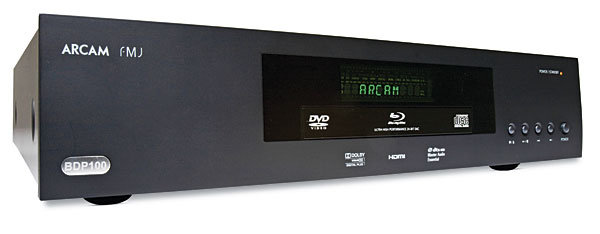Arcam FMJ BDP100 Blu-ray Player Page 3

In fact, when the sharpening wasn’t visible, which was most of the time, the Arcam produced the most rewardingly detailed images I’ve yet seen from a Blu-ray player on all of these displays. The margin wasn’t huge, but it was evident.
I suspect that the Arcam may provide some subtle enhancement, perhaps dynamic in nature, which is visible only when it runs into similar enhancement in a source. When combined, the result then exceeds the visibility threshold. When the Arcam is good, which is most of the time, it is very good. But I might argue that this issue would be a good candidate for job one in a future BDP100 update.

Or perhaps job two. While the Arcam did a good job on most of our Video Test Bench hurdles (see chart), it failed not only HD 2:2 pulldown (a common shortcoming), but it also clipped both above white and below black. The latter is a more serious lapse and one that precludes a Top Pick designation.
A Little Night Music
On film playback over HDMI, the Arcam initially sounded punchier and more dynamic than the OPPO. It also sounded louder. Sure enough, when I checked the audio output levels on the Integra surround processor’s two HDMI inputs, I found that the input I was using for the OPPO was 2 to 2.5 dB lower in level. This shouldn’t happen (digital inputs are supposed to be standardized in level).
When I worked around this, I found that the two players sounded nearly identical on highresolution soundtracks over HDMI. But not quite. The Arcam was still a shade brighter, which will flatter some soundtracks more than others. However, the differences were far from being a deal maker—or a deal breaker.
I moved on to two-channel music, first via a coaxial digital link from the players to the Integra. In comparison to the OPPO, the Arcam produced more detailed, dimensional sound, with a faster attack but not excessive brightness. There certainly wasn’t anything clearly wrong with the OPPO’s sound, but the Arcam was more involving and encouraged prolonged listening.
In the same digital link comparison, the Marantz sounded slightly brighter than the Arcam, with more punch and an even faster attack. The Arcam sounded more natural on closely miked material with frequent hard transients. The Marantz pulled ahead on more distantly recorded classical material, with superior rendition of the recording venue’s acoustics. It was a close run, but with an S/PDIF digital connection to the AVR or surround processor, I’d give the gold star for overall performance to the Arcam.
The same was true in my analog output comparisons. The Arcam sounded superlative, with a clean, open treble, deep bass, and a palpable midrange. Imaging and soundstage depth were as good as the playback system and source material allowed. As before, the Marantz was brighter, but within an acceptable range (even in a way that was compelling on some recordings). But overall, on a wide range of music, I continued to prefer the Arcam.
I could live comfortably with either the Marantz or the Arcam as a two-channel analog playback device—or a digital transport from their S/PDIF coaxial outputs—and not feel I was missing anything. On the other hand, the OPPO sounded just a little too laid-back for me on music, in either playback configuration. But it never did anything obviously wrong, either.
These are all good players, each with its own special strengths. But the Arcam stood out in ways that might well be important to the serious audiophile—and perhaps the committed videophile as well.
Conclusions
There’s no question that the Arcam FMJ BDP100 Blu-ray player isn’t loaded for bear when it comes to features. But some buyers choose such a player over the kitchen-sink variety for the same reason an audiophile will pay five figures for a bare-bones CD player, or a CD transport and separate D/A converter: performance.
The Arcam has a few issues that keep it just shy of earning a Top Pick, including its black and white clipping and the subtle edge enhancement it appears to add to some source material in some circumstances. But its subjective video performance is nonetheless impressive, and its audio performance is beyond criticism. For many, those qualities will be more than enough.






























































